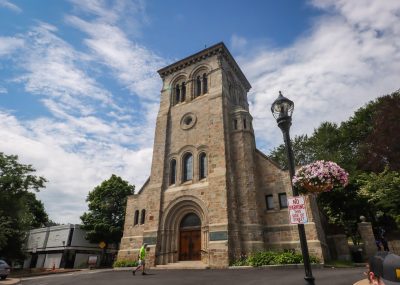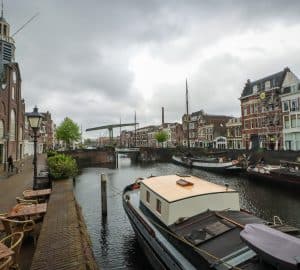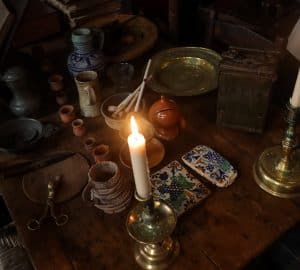
The meeting of the local covenant church community played a big role in the life of William Bradford and the other Pilgrims. It was core to their distinctive doctrine – that Christians ought to be part of the church not just as members of a church that stretched across the entire country, but of a single local meeting, bound together by a solemn covenant. It was as a part of this institution of the local church that they encountered some of the most serious times of their lives – from their flight to Holland to the first winter in America where so many died. They encountered these trials with comrades – brothers and sisters – at their side. It was a church in which, along with these sorrows, they found great joy and unity as one body. John Robinson, their pastor, wrote of this unity, telling a critic of Separatism that experiencing the blessings to be found in the Pilgrim church would change his mind:
[I]f ever I saw the beauty of Sion, and the glory of the Lord filling his tabernacle, it hath been in the manifestation of the divers graces of God in the church, in that heavenly harmony, and comely order, wherein by the grace of God we are set and walk: wherein, if your eyes had but seen the brethren’s sober and modest carriage one towards another, their humble, and willing submission unto their guides, in the Lord, their tender compassion towards the weak, their fervent zeal against scandalous offenders, and their long-suffering towards all, you would, I am persuaded, change your mind, and be compelled to take up your parable, and bless, where you ‘ purposed to curse, as Balaam did.1
When Bradford looked back in later years he noted a decline in the church in Plymouth and seems to long for the experiences that he had with the church in years gone by. He wrote of the great sorrow that filled the hearts at the parting of those of the church who headed off to America from those who were left behind:
[T]ruly dolfull was the sight of that sade and mournfull parting; to see what sighs and sobbs and praires did sound amongst them, what tears did gush from every eye, & pithy speeches peirst each harte; that sundry of the Dutch strangers that stood on the key as spectators, could not refraine from tears. Yet comfortable & sweete it was to see shuch lively and true expressions of clear & unfained love. But the tide (which stays for no man) caling them away yet were thus loath to departe, their Reverand pastor falling downe on his knees, (and they all with him,) with watrie cheeks commended them with most fervente praiers to the Lord and his blessing. And then with mutuall imbrases and many tears, they tooke their leaves one of an other; which proved to be ye last leave to many of them.2
Understanding the sweet communion that brought forth these tears is vital to understanding the Pilgrim story.
1. The Works of John Robinson, Pastor of the Pilgrim Fathers by John Robinson. Edited by Robert Ashton. (Harrisonburg, VA: Sprinkle Publications, 2009) vol. 2, p. 223.
2. History of Plymouth Plantation: 1620-1647 by William Bradford. Edited by Worthington C. Ford (Boston: Houghton Mifflin Company, 1912) vol. 1, p. 121-122. Some spelling modernized.




